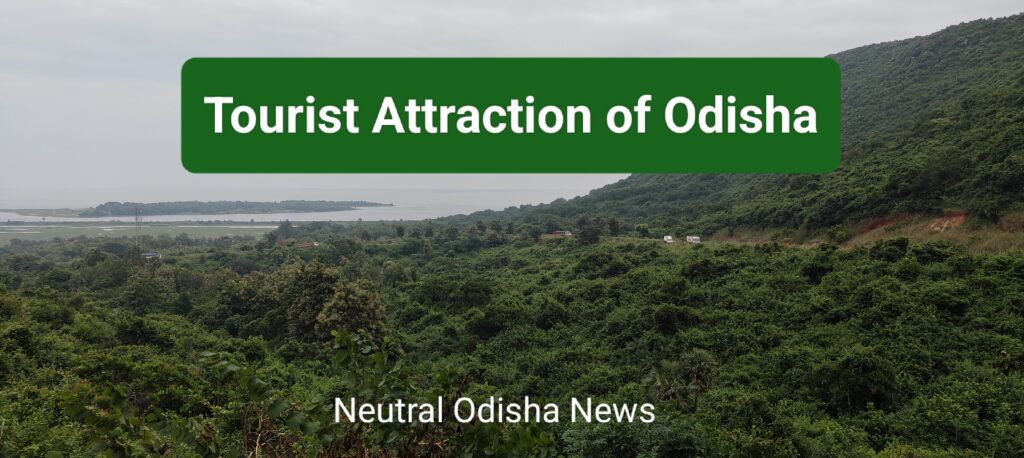Lakshadweep, an archipelago in the Arabian Sea, is a Union Territory of India and is the smallest among all Indian Union Territories in both area and population. The name “Lakshadweep” means “one hundred thousand islands” in Sanskrit, though the territory comprises 36 islands in total, with only 10 of them being inhabited. These islands are known for their pristine beauty, clear blue waters, coral reefs, and diverse marine life.
Geography:
Lakshadweep lies about 200-400 kilometers off the southwestern coast of Kerala. The archipelago consists of atolls, reefs, and submerged banks, with a total land area of about 32 square kilometers. Despite its small size, the islands are ecologically and geologically significant. They are part of the Chagos-Laccadive Ridge, a long underwater mountain range formed from ancient volcanic activity.
The islands are divided into three categories:
- Atolls: Coral islands that encircle a lagoon.
- Reefs: Coral reefs that are submerged under the water.
- Banks: Submerged, flat-topped mounds that are the remnants of older coral reefs.
Among the inhabited islands, the major ones include:
- Agatti
- Minicoy
- Kavaratti (the capital)
- Bangaram (tourist spot)
- Kalpeni
History:
Lakshadweep’s history is closely tied to its strategic location in the Arabian Sea and its natural resources, particularly coconut and coir. Historically, the islands were influenced by various South Indian kingdoms, like the Cheras, and were later administered by the Muslim rulers of Kerala. The islands were converted to Islam in the 14th century by Arab traders and missionaries.
During colonial times, the islands were controlled by the British East India Company. After India’s independence in 1947, Lakshadweep became a Union Territory in 1956.
Demographics and Culture:
The population of Lakshadweep is predominantly Muslim, with a unique culture that blends South Indian and Arab influences. The official languages spoken are Malayalam, Dhivehi (on Minicoy Island), and English. The islanders live a simple, traditional lifestyle, with fishing and coconut cultivation being the main occupations.
The people follow matrilineal inheritance, especially on Minicoy, where a blend of Maldivian culture is evident. The society is deeply religious, with most of the population following Sunni Islam.
Economy:
Lakshadweep’s economy is primarily driven by:
- Fisheries: The sea around Lakshadweep is rich in tuna and other fish species, and fishing is the main occupation for most islanders.
- Coconut cultivation: The islands are abundant in coconut palms, and coir (fiber from coconut husks) production is a significant economic activity.
- Tourism: In recent years, Lakshadweep has emerged as a popular eco-tourism destination due to its unspoiled natural beauty, marine life, and water sports like snorkeling, scuba diving, and kayaking. However, tourism is regulated to preserve the fragile ecosystem.
- Handicrafts: The islanders also engage in creating handicrafts from coconut products, which are sold to tourists.
Ecology and Environment:
Lakshadweep is known for its rich biodiversity, especially in marine ecosystems. The coral reefs surrounding the islands play a crucial role in maintaining the ecological balance and protecting the islands from coastal erosion. The coral atolls are home to a wide range of marine species, including sea turtles, dolphins, and reef fish.
The flora of Lakshadweep is dominated by coconut palms, breadfruit, and a few other varieties of tropical plants. Mangroves and sea grasses provide crucial ecological functions by stabilizing the coastline and supporting marine life.
Environmental Concerns:
- Coral Reef Degradation: The coral reefs are under threat due to climate change, especially coral bleaching caused by rising sea temperatures.
- Coastal Erosion: The islands are vulnerable to coastal erosion, with rising sea levels being a major concern.
- Limited Freshwater Resources: The islands rely on rainwater harvesting and have limited freshwater reserves, making water management crucial for sustainability.
Tourism:
Lakshadweep’s allure lies in its isolation, natural beauty, and unspoiled beaches. Major tourist attractions include:
- Kavaratti Island: Known for its lagoons and the Ujra Mosque.
- Minicoy Island: Famous for its unique culture, lighthouse, and tuna fishing.
- Bangaram Island: A popular destination for scuba diving, known for its pristine beaches and clear waters.
Tourism is highly regulated by the government to preserve the fragile ecosystem. Foreign tourists need special permits to visit, and even Indian tourists are allowed access only to certain islands.

Administration:
Lakshadweep is administered by an Administrator appointed by the President of India. The governance structure focuses on sustainable development, maintaining cultural heritage, and protecting the fragile ecosystem of the islands.
How to Reach Lakshadweep Islands:
Reaching Lakshadweep involves planning, as the islands are isolated from the Indian mainland and have limited connectivity. Only a few entry points and transportation options are available.
1. By Air:
- Agatti Island has the only operational airport in Lakshadweep, which is well connected by flights from Kochi International Airport in Kerala. Indian carriers like Alliance Air operate flights from Kochi to Agatti.
- Travel to Other Islands: After arriving at Agatti, further travel to other islands like Kavaratti or Bangaram is facilitated by boats or ferries operated by the Lakshadweep administration.
2. By Sea:
- Passenger Ships: Ships operated by the Lakshadweep administration sail from Kochi (Ernakulam Port) to different islands. The journey takes around 14-20 hours, depending on the destination island.
- There are multiple classes available (first-class, second-class cabins), and facilities include food and accommodation during the journey.
- Ships like MV Kavaratti, MV Arabian Sea, and MV Minicoy operate regularly.
Permissions Required:
Because of the sensitive ecological and cultural nature of the Lakshadweep Islands, permits are mandatory for all visitors, including Indian citizens. Here’s a breakdown of the process:
1. For Indian Citizens:
- Entry Permit: Indian citizens require a permit issued by the Lakshadweep Administration to visit the islands. This can be obtained through tour operators authorized by the Lakshadweep Tourism Department, as private travel is restricted.
- Procedure:
- Submit a request along with identification proof (Aadhaar card, passport, etc.) to authorized tour operators.
- The tour operator will handle the formalities, including obtaining the necessary permissions from the Lakshadweep Administration.
- Permitted Islands: Indian tourists are allowed to visit islands like Kavaratti, Kalpeni, Minicoy, Agatti, and Bangaram. Some islands like Bitra, Chetlat, and Amini are restricted for tourism.
2. For Foreign Tourists:
- Foreigners are also allowed to visit Lakshadweep but with stricter limitations.
- Entry Permit: Foreign tourists need a special entry permit issued by the Lakshadweep Administration. The islands open to foreign tourists include Agatti, Bangaram, and Kadmat.
- Procedure:
- Similar to Indian citizens, foreign tourists must apply through authorized travel agents, providing passport details and valid visas for India.
- Foreigners are not allowed to visit islands with high indigenous populations, such as Kavaratti and Minicoy.

Important Points:
- No Direct Online Applications: Permits for both Indian and foreign tourists cannot be obtained directly online. They must be arranged through approved travel agents or tour operators who have the authority to book packages and apply for the permits on your behalf.
- Travel Restrictions: Only designated islands are open for tourism, and movement between islands requires pre-approved transport arranged by the tour operator.
- Accommodation: Only select islands have accommodations, primarily managed by the SPORTS (Society for Promotion of Nature Tourism and Sports) and private resorts on islands like Bangaram and Kadmat.
Traveling to Lakshadweep involves securing permits, and it is best to rely on tour packages provided by authorized agents who manage transport, accommodation, and inter-island movement. Because of its eco-sensitive environment, tourism is regulated, ensuring that the natural beauty of Lakshadweep is preserved.
Lakshadweep is a hidden gem in India’s tourism map, offering a unique combination of natural beauty, cultural richness, and ecological diversity. However, preserving its fragile environment while promoting eco-tourism is a major challenge for its administration. With increasing environmental concerns, sustainable development is essential for the future of these islands.




